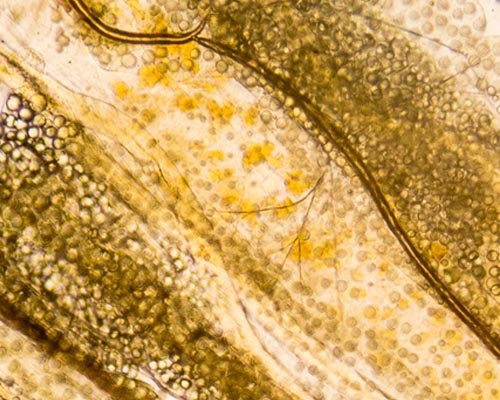OECD TG 219: Sediment-water Chironomid toxicity test using spiked water
First instar Chironomus riparius larvae (in house breeding at BT) are exposed to a concentration range of the test substance in sediment/water system, for 28 days. The test starts by placing first instar larvae into the test beakers containing the sediment/water system and subsequently spiking the test substance into the water. The exposure is carried out under controlled conditions of temperature and light cycle. Chironomid emergence and development rate is measured at the end of the test. Larval survival and weight may also be measured after 10 days if required (using additional replicates as appropriate).
TEST SYSTEM
Chironomus riparius
A toxic reference substance is tested twice a year to check the sensitivity of the organisms.

STUDY DESIGN
Range finding test includes at least 5 concentrations of the test substance and 1 untreated control (1 replicate/concentration or control) with 20 larves/replicate
Limit test is carried out with 1 concentration of the test substance and 1 untreated control (6 replicates/concentration or control) with 20 larves/replicate
Dose-response test includes at least 5 concentrations of the test substance and
1 untreated control (4 replicates/concentration or control) with 20 larves/replicate
Analytical checks, to verify the exposure concentrations (where relevant or required samples include water, pore water and sediment), are performed at time 0 and at time 28 days on control and on each test substance sample.
The analysis are performed using a method validated according to SANCO/825/00 rev. 8.1 and SANCO/3029/99 rev. 4 guidance documents.
ENDPOINTS
Emergence, development rate: EC50 at 28 days as the main endpoint and as other endpoints: EC15, LOEC/NOEC.
Study includes GLP management and reporting.
REFERENCES AND GUIDELINES
OECD Guideline fo Testing of Chemicals, No. 219 (13th April 2004) – Sediment-water Chironomid toxicity test using spiked water.
SANCO/825/00 rev. 8.1 (16/11/2010) – Guidance document on pesticide residue analytical methods.
SANCO/3029/99 rev. 4 (11/07/2000) – Residues: guidance for generating and reporting methods of analysis in support of pre-registration data requirements for Annex II (Part A, section 4) and Annex III (Part A, section 5) of Directive 91/414.
Study finder
Scientific Contact
Sabrina Mantilacci
E-mail: mantilacci@biotecnologiebt.it
Phone: +39 075 895 0045 – Ext. 268
Business Contact
Katy Lazzari
E-mail: klazzari@biotecnologiebt.it
Phone: +39 075 895 0045 – Ext. 246
Need more info? Send us a message
Fill in the form with the required information (*).
Our team will be happy to provide all the necessary support with regard to your request.


 English
English Italian
Italian